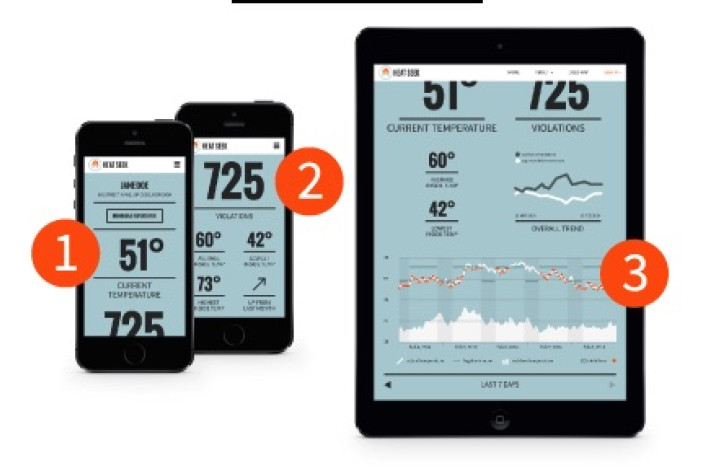Heat is on for stingy landlords thanks to Internet-connected devices

This winter was inarguably a cruel one, with temperatures in February registering as the third coldest ever. And for some, it was just as cold inside. While NYC landlords are legally mandated to provide heat when it's less than 55 degrees during the day and 40 degrees at night, many decide to flounce the law—about 200,000 complaints are filed across the city each winter.
But this year, as Fast Company reports, some tenants with delinquent landlords had a valuable new tool: the Internet-connected thermostat.
In the past it's been hard to prove heating violations in court (manual thermostat logs are required and it often becomes a case of the landlord's word vs. the tenant's), but Heat Seek NYC, which we've written about before, rolled out this winter a small pilot program that connected Internet-connected thermostats with a companion app that logs temps every hour. Sensors were placed in 21 apartments in four different buildings in the Bronx and Brooklyn, where complaints are most common, and Heat Seek found 5,000 violations, each representing an hour when the temperature was below the legal minimum.
The non-profit, a winner of the NYC BigApps competition, is now working with organizations like Urban Justice Center to help usher cases through housing court, with critical heating data in tow.
But it's not all about catching bad landlords, a Heat Seek representative tells Fast Company. The technology can be harnessed for efficiency, too: Landlords (of older buildings mostly) have reached out to the firm asking for help monitoring temps inside their buildings so they can make sure they're keeping tenants toasty and happy.
Related:
Heating 101: What New Yorkers need to know to warm up for fall
A new device is trying to stop landlord from skimping on heat
Ask an Expert: Who pays for missing heat pipes


























